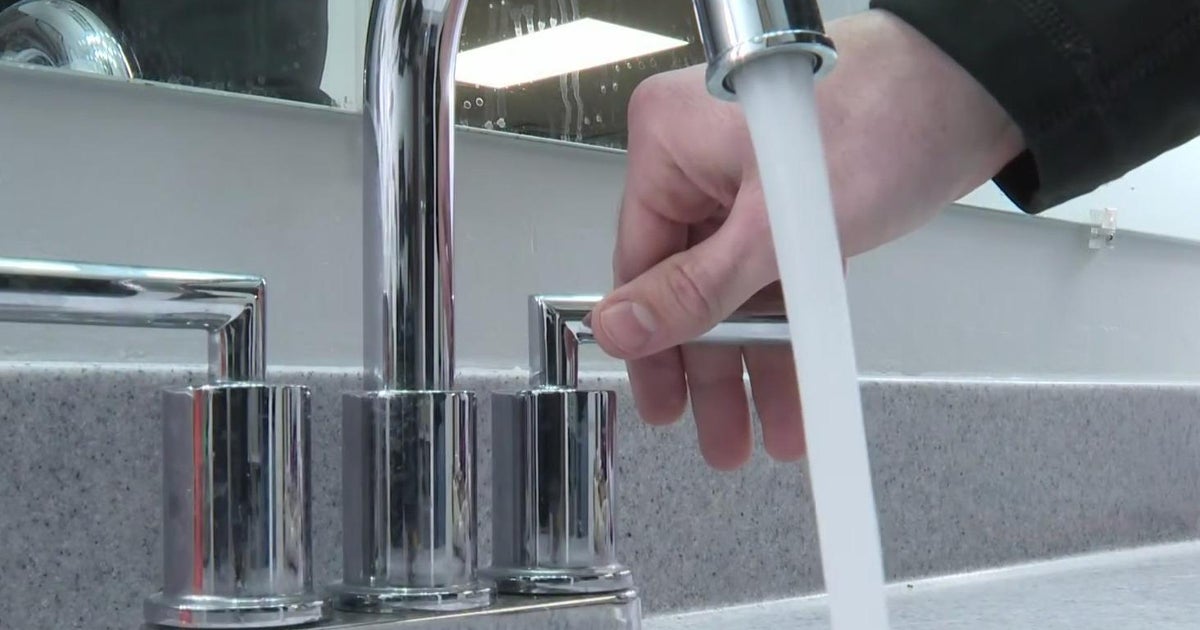Migrants Fill Tijuana Shelters, More On Way To US Border
TIJUANA, Mexico (AP) — The first members of a caravan of Central Americans to reach the U.S. border slept in overcrowded shelters and in tents with a view of armed U.S. Border Patrol agents, with many saying they will wait for other migrants to join them before making their next moves.
Hundreds of migrants have arrived by bus in Tijuana since Tuesday, occupying the little space still available in the city's shelters and spilling onto an oceanfront plaza sandwiched between an old bullring and a border fence topped with recently installed concertina wire.
Some men climbed up on the fence to take a look at the other side Wednesday. Women and young children sleeping in tents on the plaza could see Border Patrol agents carrying machine guns in camouflage gear with San Diego's skyline in the distance.
The Juventud 2000 shelter squeezed in 15 women and their children, bringing occupancy to nearly 200, or double its regular capacity. Others were turned away. Several dozen migrants, mostly single men, spent the night at a beach that is cut by the towering border wall of metal bars
The first arrivals generally received a warm welcome despite Tijuana's shelter system to house migrants being at capacity. Migrants lined up for food while doctors checked those fighting colds and other ailments.
Some migrants said they would seek asylum at a U.S. border crossing, while others said they might attempt to elude U.S. authorities by crossing illegally or perhaps settle in Tijuana. But all of about a dozen people interviewed Wednesday said they would first wait for others from the migrant caravan to arrive and gather more information.
"We have to see what we're offered, just so they don't send us back to our country," said Jairon Sorto, a 22-year-old Honduran who arrived by bus Wednesday.
Sorto said he would consider staying in Tijuana if he could get asylum from Mexico. He said he refused to consider Mexico's offer of asylum in the southern part of the country because it was too close to Honduras and he felt unsafe from his country's gangs.
U.S. Defense Secretary Jim Mattis, meanwhile, visited U.S. troops posted at the border in Texas and said the deployment of military personnel ordered by President Donald Trump provides good training for war, despite criticism that the effort is a waste of taxpayer money and a political stunt. Most of the troops are in Texas, more than 1,500 miles from where the caravan is arriving.
On Wednesday, there was no evidence of caravan members at Tijuana's main border crossing to San Diego, where asylum seekers gather every morning. The San Ysidro port of entry, the busiest crossing on the U.S.-Mexico border, processes only about 100 asylum claims a day, resulting in waits of five weeks even before migrants in the caravan began to arrive.
The first wave of migrants in the caravan, which became a central theme of the recent U.S. election, began arriving in Tijuana in recent days, and their numbers have grown each day. The bulk of the main caravan appeared to still be about 1,100 miles (1,800 kilometers) from the border, but has recently been moving hundreds of miles a day by hitching rides on trucks and buses.
Mexico has offered refuge, asylum and work visas to the migrants, and its government said Monday that 2,697 temporary visas had been issued to individuals and families to cover them during the 45-day application process for more permanent status. Some 533 migrants had requested a voluntary return to their countries, the government said.
The Central Americans in the caravan are the latest migrants to arrive in Tijuana with the hope of crossing into the United States. Tijuana shelters in 2016 housed Haitians who came by the thousands after making their way from Brazil with plans to get to the U.S. Since then, several thousand Haitians have remained in Tijuana, finding work. Some have married local residents and enrolled in local universities.
Claudia Coello, a 43-year-old Honduran, said she was exhausted after four days of hitchhiking and bus rides from Mexico City with her two sons, two daughters-in-law and 1-year-old grandson. As she watched her daughter-in-law and grandson lying inside a donated tent, she said she would wait for caravan leaders to explain her options.
A few people pitched tents at the Tijuana beach plaza while most, like Henry Salinas, 30, of Honduras, planned to sleep there in the open. Saying he intended to wait for thousands more in the caravan to arrive, Salinas said he hoped to jump the border fence in a large group at the same time, overwhelming Border Patrol agents.
"It's going to be all against one, one against all. All of Central America against one, and one against Central America. ... All against Trump, and Trump against all," he said.
On Wednesday, buses and trucks carried some migrants into the state of Sinaloa along the Gulf of California and farther northward into the border state of Sonora. The Rev. Miguel Angel Soto, director of the Casa de Migrante in the Sinaloa capital of Culiacan, said about 2,000 migrants had arrived in that area.
Small groups were also reported in the northern cities of Saltillo and Monterrey, in the region near Texas.
About 1,300 migrants in a second caravan were resting at a Mexico City stadium where the first group stayed several days last week. By early Wednesday, an additional 1,100 migrants from a third and last caravan also arrived at the stadium.
Like most of those in the third caravan, migrant Javier Pineda is from El Salvador, and hopes to reach the United States. Referring to the first group nearing the end of the journey, Pineda said, "if they could do it, there is no reason why we can't."



